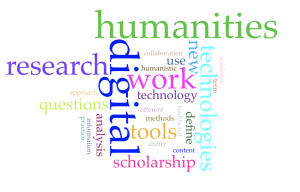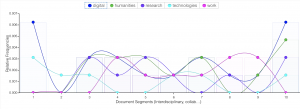For my group’s transcriptions, we analyzed the Bethlehem memoirs, which include memoirs about Joseph Lingard, Henry Unger, Anna Elizabeth Rauch, and others. Since these memoirs are typically associated with the Christian church, we wanted to find out what kind of impact the church had in their lives. Our decided central question is: Was the Congregation perceived in a positive or negative way in the lives of the Moravian People?
The manuscript that I analyzed was about the life of Anna Elizabeth Rauch. I had the first five out of the nine pages of the small account of her life and “departure”. In these first few pages, Anna travels to Jamaica to visit her slaves on the Mesopotamia slave plantation. Throughout the manuscript, Anna praises God for her safe travels to Jamaica. She first started at Port Royal, and then retired to Carmel, where she came down with rheumatic fever. At that time, they didn’t have a cure, so rheumatic fever was potentially terminal. She felt a little better later on, and went to visit her slaves every now and then in Mesopotamia. Anna was really friendly with the slaves, and she also maintained a great relationship with God at this time. She became really weak in 1762, and eventually reached the point where she could barely move. At one point, her husband proposed her to go to Mesopotamia. She felt too weak to go, but went anyways, insisting she had made out with her Savior concerning it. In this last page of my part of the memoirs, she confronted to Charles while crying, and said her final goodbyes to him, because she knew she was terminal.
Voyant proved to be a superior way to analyze the transcriptions as a whole, as well as my individual transcription. Voyant was especially helpful in that the word analysis tools provided proved to be extremely helpful to me.
I liked the cirrus in that it gave me a physical manifestation of all of the different word frequencies. I also enjoyed the collocates feature, which gave the most occurring context of each word. One of the most prominent adjacencies was with “dear” and “savior”, which helps to convey their attitude towards religion. Whitney believes that “word clouds have proven to be quite popular…for their practical ability to visually identify the patterns of meaning in large and potentially unwieldy texts” (Whitney 199).

My personal favorite way to analyze the text was with TermsBerry. This was a visually appealing way of analyzing the context of the most prominent words in the text. The TermsBerry consists of “berries” of different sizes with regards to the frequency of the word. When you scroll over that word with the mouse, it glows green and the words that are in context with that word glow up in red.

These specific tools would not be available for me if it was not for the growing industry of digital humanities. Before the age of modern technology, it would not be possible to perform such a vast analysis on a text this size in the same span of time. As in the words of Whitney “the forces of the digital era are rethinking the ways that read at the same time that American literature scholars are rethinking the ways that we archive large bodies of texts” (Whitney 201).With these means of analysis, I am able to draw significant conclusions about the text, such as that religion and the congregation are proposed with a positive connotation. It seems as if the missionaries genuinely enjoy their devotion to the Lord, and their life revolves an optimistic viewpoint of our Creator.

For the entire Bethlehem memoir transcription, my words with the highest frequency were savior(20), heart(18), dear(14), year(13), congregation(11), and brethren(10). Upon seeing these visualizations, I started to derive an answer for my central question. As in the wise words of Whitley, “The goal in visualizing data from a literary text is to spark inquiry” (Whitley 189). The pattern that consistently emerges in all of the visual tools is the prevalence of all the ecclesiocentric behavior.
I am a sophomore at Bucknell University, majoring in Mathematical Economics and minoring in Computer Science.



